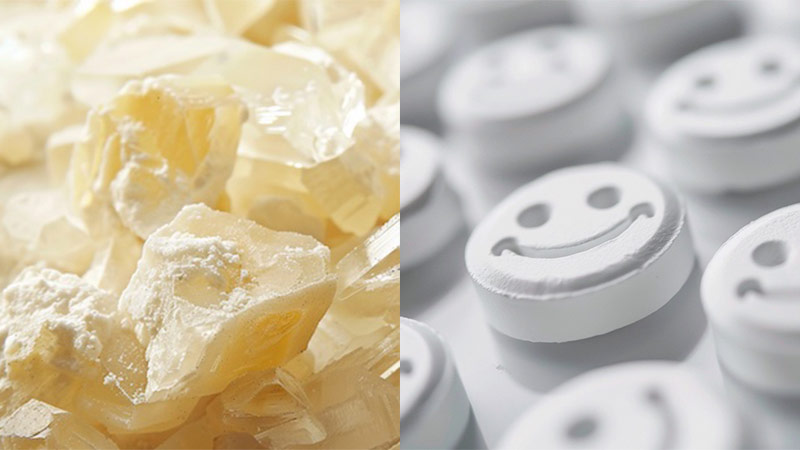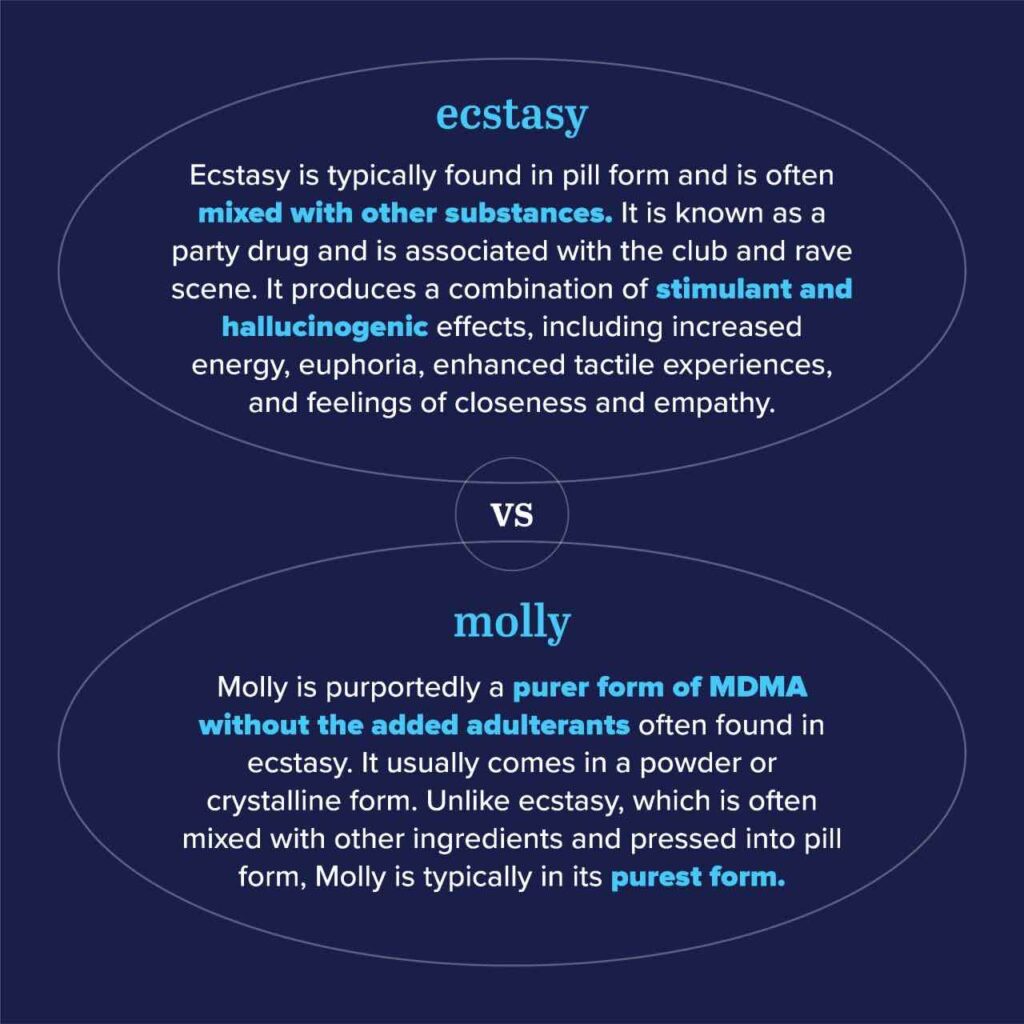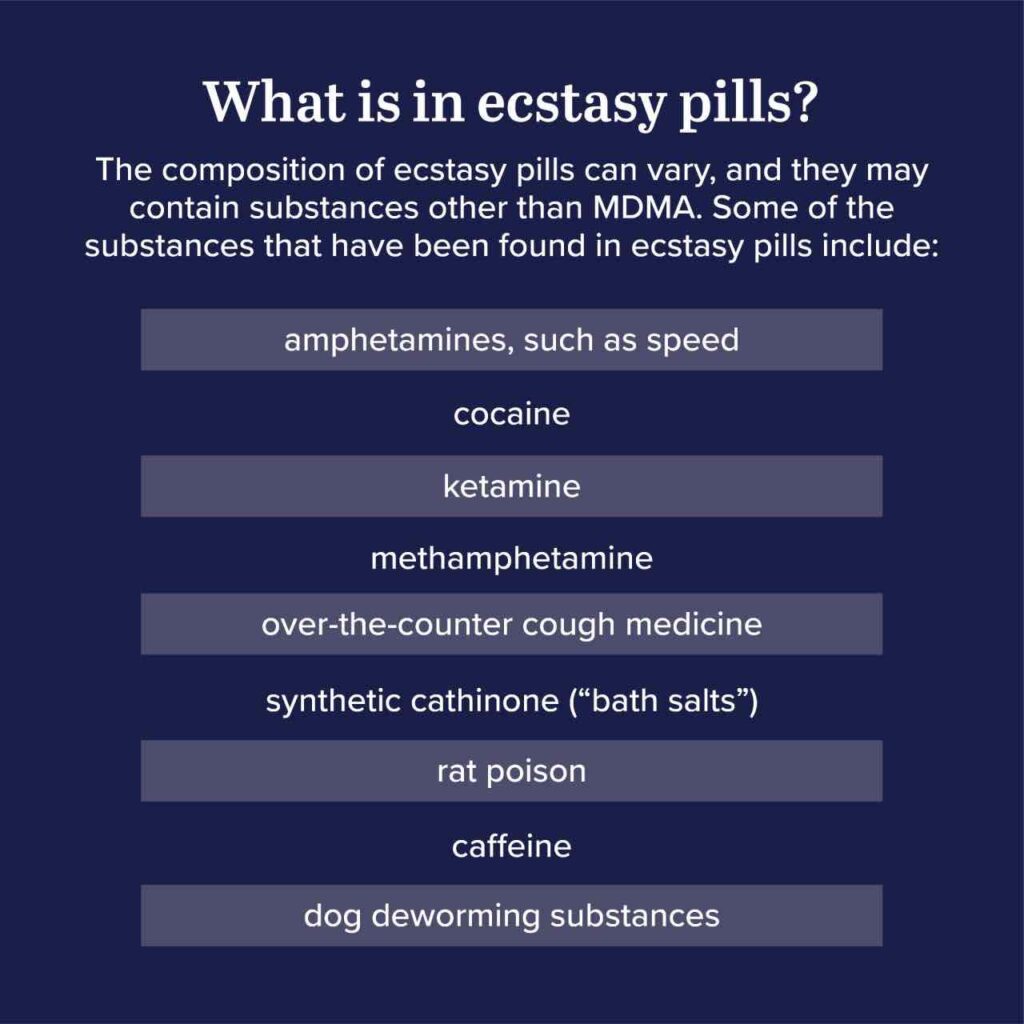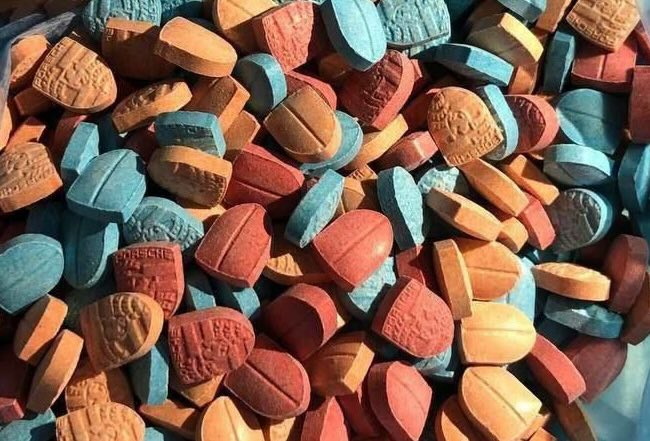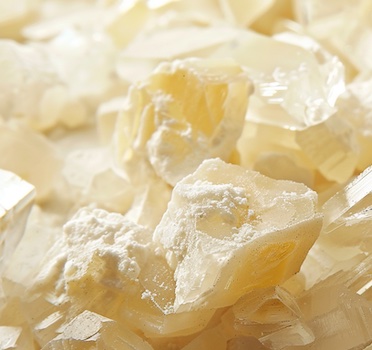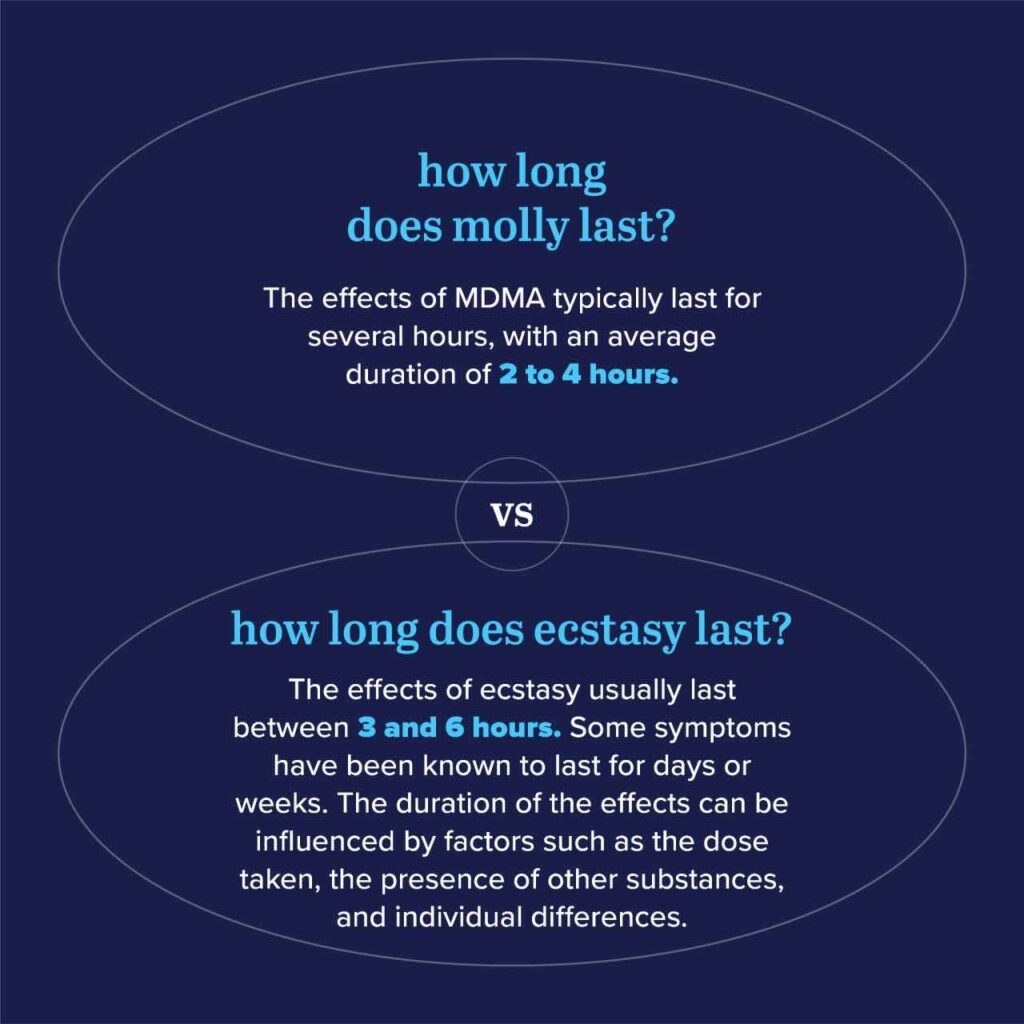Molly and ecstasy are both terms used to describe the drug MDMA (3,4-methylenedioxymethamphetamine), but there are some differences between the two.
Molly vs Ecstasy: Two Key Differences
The two key differences between Molly and Ecstasy is their form and purity. Ecstasy typically appears in pill form, often mixed with other substances.
In contrast, Molly is usually sold as a powder or crystal, purportedly offering a purer form of MDMA. However, both can vary in purity and may contain impurities.
Molly vs Ecstasy: What’s in it?
What is in Ecstasy pills?
Ecstasy pills have a more complex and hard-to-understand composition. They may contain substances other than MDMA. Some of the substances that have been found in ecstasy pills include:
- Amphetamines, such as speed,
- Cocaine
- Ketamine
- Methamphetamine
- Over-the-counter cough medicine
- Synthetic cathinone (“bath salts”)
- Rat poison
- Caffeine
- Dog deworming substances
It’s important to note that the specific composition of ecstasy pills can be unpredictable and may vary from one batch to another. This variability increases the risks associated with using ecstasy, as users may not know exactly what substances they are ingesting. Using ecstasy with other drugs, whether illegal or prescription, can also cause toxic interactions and increase the risk of harmful health effects.
What is in Molly Crystal?
The crystal form of molly is the pure crystalline or molecular form of MDMA. It is usually sold in capsules or as a powder. However, this type of molly is also often mixed with other drugs or substances, such as synthetic cathinone (“bath salts”), cocaine, methamphetamine, or fillers like caffeine or dog deworming substances. These additional substances can be added intentionally during the manufacturing process.
Molly and Ecstasy: How long do they last?
How long does molly last?
The effects of MDMA (Molly) can vary from person to person and depend on various factors such as the dose, purity, individual metabolism, and overall health. Based on the search results, the effects of MDMA typically last for several hours, with an average duration of 2 to 4 hours. However, individuals who abuse MDMA may still feel some effects for days after use.
How long does ecstasy last?
The effects of ecstasy can vary due to dosage, metabolism, and other substances in the body. Typically, noticeable effects begin within 30 minutes to an hour after oral ingestion, with initial signs felt in 15 to 30 minutes for a standard dose. Symptoms last 3 to 6 hours, but may continue for days or weeks. Duration and intensity can be influenced by quantity used, involvement of other substances, and individual reactions. Purity of ecstasy pills also changes the duration and the effects experienced.
In short, while Molly” and ecstasy both mean MDMA, ecstasy typically means the pill form, which might have extra substances, and Molly is often seen as a purer, powdered or crystalline form of MDMA.
Sources:
DEA – Ecstasy or MDMA



